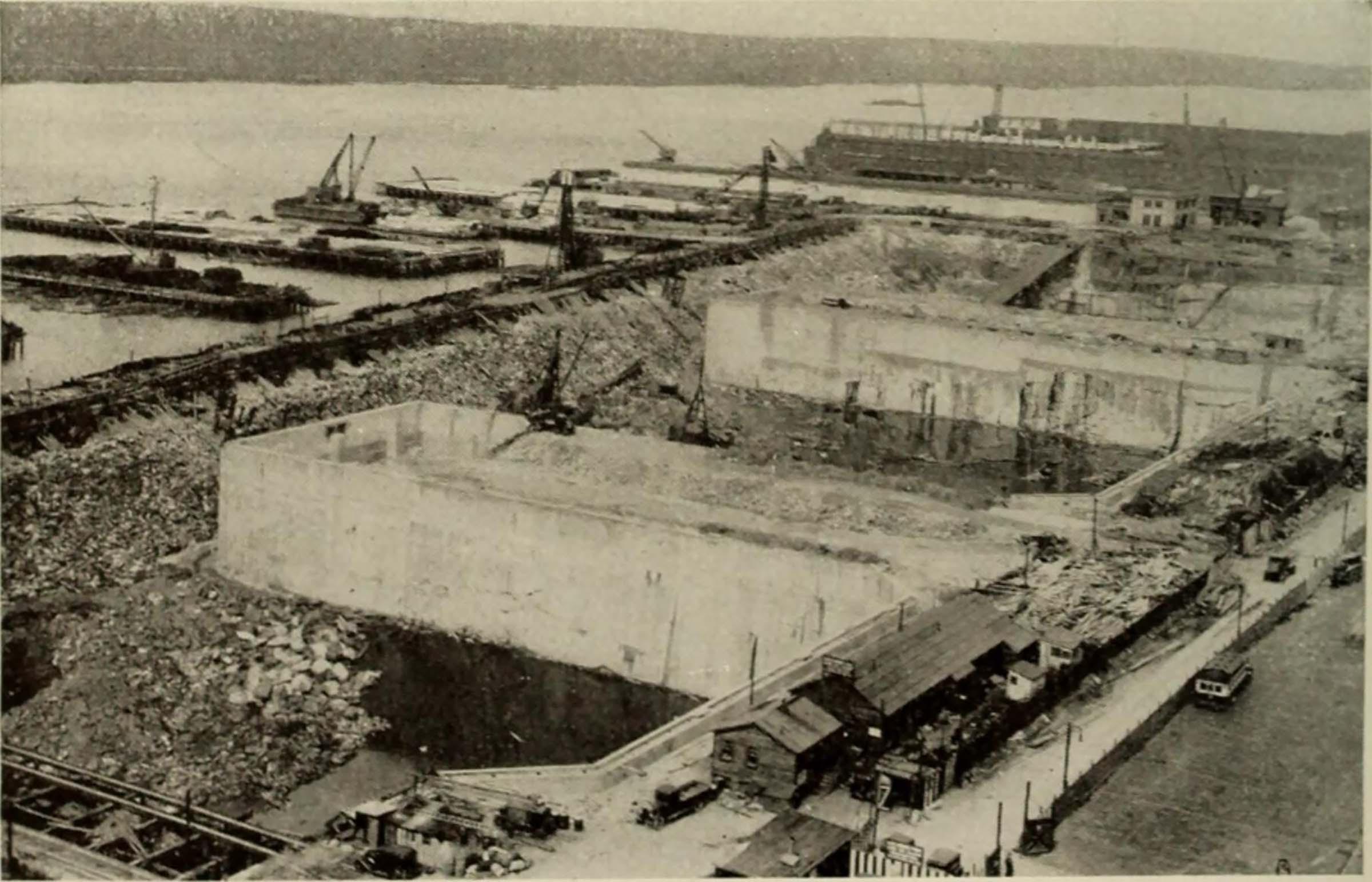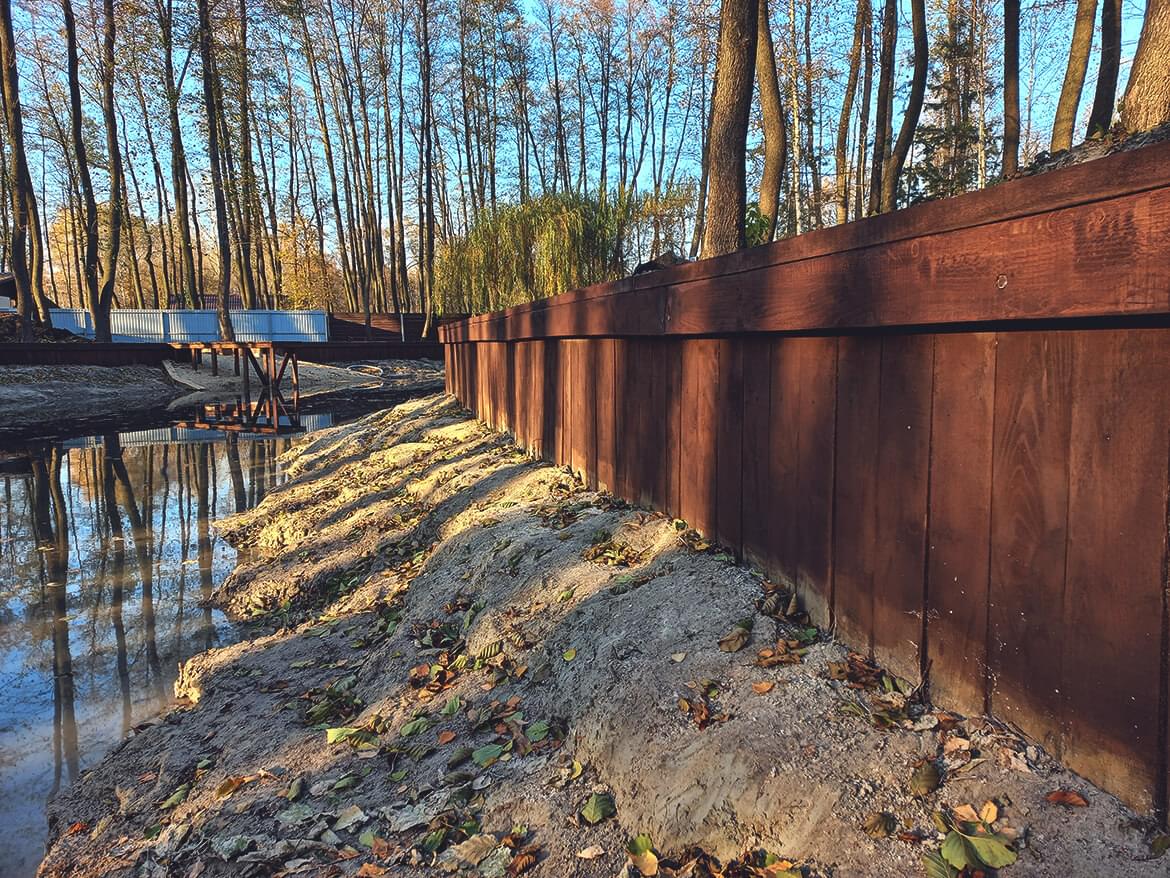Future Innovations in Bulkhead on Lake Livingston Design and Construction
Wiki Article
Exploring the Various Usages of Bulkhead Structures in Modern Architecture
Bulkhead frameworks play a significant role in modern-day architecture, offering both aesthetic and practical purposes. They can specify spaces, improve storage space services, and boost lighting. In industrial settings, they serve as prime focus that show brand name identification - Bulkhead on Lake Livingston. Furthermore, their integration commonly supports sound monitoring and sustainable practices. Recognizing the complete scope of their applications reveals much about contemporary design trends and customer experience. What ingenious uses bulkheads might arise in the future?Specifying Bulkhead Frameworks
Bulkhead frameworks play an important duty in modern style, acting as important elements in numerous building layouts. These frameworks are usually defined as increased systems or ceilings, usually made use of to conceal mechanical systems, electrical wiring, or pipes. Bulkheads can be found in both business and property setups, where they give a smooth mix of performance and looks. Their layout can incorporate lights fixtures and various other decorative components, boosting the total aesthetic charm of an area.Usually created from materials such as drywall, wood, or steel, bulkheads can be personalized to fit the building style and needs of the building (Bulkhead on Lake Livingston). They serve not only to hide unpleasant facilities however additionally to create specified zones within open spaces. By managing the circulation of an area, bulkheads add to the spatial company, making them a significant facet of modern building method. As a result, their interpretation encapsulates both practical and visual dimensions
Practical Applications in Residential Design
Bulkhead structures play a vital role in property style by assisting in area optimization methods that optimize functional locations. They contribute visual design elements that enhance the aesthetic charm of living spaces. Furthermore, these structures provide important structural assistance solutions, making sure the stability and safety and security of the home.Area Optimization Approaches
As modern-day property designs progressively focus on reliable usage of area, ingenious strategies emerge to make the most of capability without compromising looks. One famous strategy includes the assimilation of bulkhead structures, which can delineate locations while offering crucial storage services. These frameworks can be employed to produce vertical storage units that enhance both company and ease of access. In addition, multi-functional furniture, such as exchangeable sofas and foldable tables, enhances bulkhead styles, permitting areas to adapt to differing demands. Open layout further enhance spatial flow, motivating versatility in usage. Incorporating built-in shelving and recessed lighting within bulkheads also contributes to a streamlined environment, ensuring that every inch of space is utilized properly and sympathetically within the overall layout.Aesthetic Layout Components

Structural Support Solutions
In modern household layout, an effective architectural support option is vital for maintaining the integrity of rooms while optimizing format and functionality. Bulkhead structures play a substantial function in this scenario, serving as both assistance and partitioning elements. They can conceal mechanical systems, such as pipes and electric wiring, while providing reinforcement to the ceiling and floor systems. By strategically positioning bulkheads, architects can create specified areas within open flooring strategies, improving functionality without endangering structural stability. Additionally, these frameworks can fit lighting fixtures, adding to both appearances and functionality. To summarize, bulkhead frameworks are important in domestic layout, using flexible support options that boost both the capability and visual allure of living rooms.Enhancing Visual Appeals in Business Areas
When business rooms accept ingenious bulkhead structures, they not only define physical borders yet likewise greatly enhance the total visual appeals of the environment. These building components act as visual prime focus, drawing focus and producing a feeling of intrigue. By integrating varied products such as glass, steel, or wood, bulkheads can reflect a brand name's identification and goal, adding to a natural style.Furthermore, the critical positioning of bulkheads can adjust light and darkness, including depth and dimension to or else level spaces. This interplay can transform an industrial area right into an inviting ambience, encouraging customer interaction. Furthermore, using color and texture in bulkhead design can stimulate certain feelings, boosting the general customer experience. Ultimately, the thoughtful assimilation of bulkhead structures boosts the aesthetic appeal of business spaces, making them not just useful yet additionally aesthetically captivating, thereby cultivating a long lasting perception on visitors.
Acoustic Performance and Sound Management
Efficient acoustic efficiency plays an essential role in contemporary design, specifically within industrial areas where sound administration is critical. Bulkhead structures can considerably boost acoustic top qualities by taking in audio, lowering reverberation, and mitigating noise transfer in between areas. These functions are especially helpful in settings such as cinemas, dining establishments, and offices, where clear interaction and a pleasurable acoustic experience are extremely important.The tactical placement and layout of bulkheads can assist create sound-buffer zones, effectively separating loud areas from quieter ones. Products made use of in bulkhead construction, such as soft coatings and acoustic panels, add to their sound-dampening abilities. Additionally, the unification of bulkheads enables the integration of sound-absorbing components without endangering visual appeal. By dealing with acoustic efficiency, architects can produce unified settings that improve comfort, enhance user experience, and advertise efficiency, making bulkheads an essential component in the design of contemporary business areas.
Integrating Bulkheads for Reliable Area Use
Usually forgotten, the assimilation of bulkheads in building layout can significantly improve room use in modern structures. These structural elements offer numerous functional purposes, offering a means to conceal mechanical systems, electric wiring, and pipes without jeopardizing visual appeals. By purposefully placing bulkheads, architects can create defined areas within open floor strategies, thereby assisting in much better company and circulation.Bulkheads can integrate storage services and lights features, optimizing the performance of or else squandered upright room. In residential setups, they might define areas such go as kitchens or living areas, while in business spaces, they can boost the efficiency of layouts by plainly noting pathways and workspace.
Inevitably, the thoughtful combination of bulkheads adds to a much more well organized and aesthetically appealing setting, enabling for versatile rooms that can evolve with the demands of their occupants. This approach not only optimizes space but also cultivates an extra harmonious communication between form and function.
Bulkheads in Public Architecture

Building Aesthetic Enhancements
While lots of architectural aspects goal for capability, bulkheads in public design serve a twin objective by enhancing aesthetic charm. These structures often develop visual passion through their design, integrating seamlessly with bordering aspects. By using various products, appearances, and shades, bulkheads can add to an one-of-a-kind identity for public areas, such as airports, museums, and libraries. Their critical placement aids to define areas, assisting visitors while including depth to the general layout. In addition, bulkheads can emphasize lights, producing dynamic ambiences that transform throughout the day. This visual improvement not only boosts the visitor experience yet additionally fosters a sense of place, making bulkheads a crucial factor to consider in modern public style. Generally, bulkheads embody the fusion of kind and feature.
Architectural Support Solutions
As designers seek ingenious ways to enhance the architectural integrity of public areas, bulkheads become necessary components in the layout and building and construction procedure. These frameworks give critical support, specifically in locations subject to hefty foot traffic or vibrant loads. By dispersing weight uniformly, bulkheads aid avoid architectural failing while enabling functional design choices. In huge locations, such as stadiums and convention centers, bulkheads are typically integrated right into the general architectural framework, making certain security and security. In addition, they can assist in the consolidation of utilities and mechanical systems, adding to the effectiveness of area use. Inevitably, bulkheads stand for an important service in contemporary public design, reinforcing both capability and protection in community-focused environments.Environmental Protection Measures
Including environmental management actions right into public architecture has become progressively vital as city developers focus on sustainability together with architectural support. Bulkhead structures offer a dual function in this regard, functioning as barriers versus disintegration and flooding while concurrently enhancing the visual appeal of metropolitan landscapes. Their layout frequently includes natural environments such as greenery, which can boost air top quality and give habitats for wildlife. In addition, bulkheads can be crafted with absorptive products that enable water absorption, decreasing overflow and promoting groundwater recharge. This assimilation of ecological factors to consider not only protects the environment yet likewise fosters area strength versus more helpful hints environment change. By using bulkheads effectively, architects contribute to lasting city advancement that straightens with contemporary environmental goals.Future Patterns in Bulkhead Style
Arising patterns in bulkhead layout show a growing emphasis on sustainability, technology, and capability in contemporary architecture. Developers are increasingly incorporating environmentally friendly products, such as recycled compounds and bioplastics, to lower ecological impact. In addition, the combination of smart modern technology is becoming widespread, allowing bulkheads to serve multi-functional objectives, including energy storage and climate control.
In city setups, modular bulkhead systems are gaining grip, offering versatility in layout and simplicity of installment. These systems can be adjusted to various landscapes, enabling efficient space application. Additionally, visual factors to consider are progressing; bulkheads are currently being made to improve aesthetic charm, commonly including creative elements that resonate with local culture.
As environment resilience ends up being a top priority, future bulkhead layouts will likely focus on flood defense and stormwater monitoring, making sure architectural integrity while dealing with environmental challenges. This shift signifies a holistic strategy to design that meets both human requirements and ecological duties.
Often Asked Questions
What Products Are Commonly Used for Bulkhead Building?
Typical materials for bulkhead building consist of concrete, steel, wood, and composite materials. These options offer durability, structural stability, and resistance to environmental elements, making them appropriate for different applications in building and engineering projects.Exactly How Do Bulkheads Influence Building Energy Effectiveness?
Bulkheads boost developing power effectiveness by supplying thermal insulation and minimizing air leakage (Bulkhead on Lake Livingston). They aid preserve indoor temperature levels, consequently lowering heating and cooling demands, ultimately causing reduced power expenses and enhanced ecological sustainabilityExist Any Building Ordinance Certain to Bulkhead Structures?
Yes, building codes certain to bulkhead structures exist, varying by area. These regulations normally deal with safety and security, structural stability, and ease of access, making certain that bulkheads fulfill needed standards for construction and layout within a given territory.Can Bulkheads Be Easily Changed or Eliminated Later On?
Bulkheads can usually be changed or gotten rid of, depending upon their layout and building. Such changes might require careful preparation and adherence to building codes to assure architectural integrity and safety are kept throughout the process.What Are the Prices Connected With Setting Up Bulkhead Structures?
The prices connected with setting up bulkhead structures can differ considerably, commonly affected by products, layout complexity, and labor. Normally, costs range from modest to high, relying on the task's specific demands and location.Bulkhead structures play a critical duty in modern-day architecture, serving as vital elements in different building designs. Bulkhead frameworks play an essential function in click this site household style by helping with room optimization techniques that make best use of useful locations. Frequently neglected, the combination of bulkheads in building style can greatly improve room application in contemporary buildings. As designers seek cutting-edge means to boost the structural honesty of public spaces, bulkheads arise as essential parts in the design and building and construction procedure. The prices linked with installing bulkhead structures can vary considerably, typically influenced by products, design intricacy, and labor.
Report this wiki page